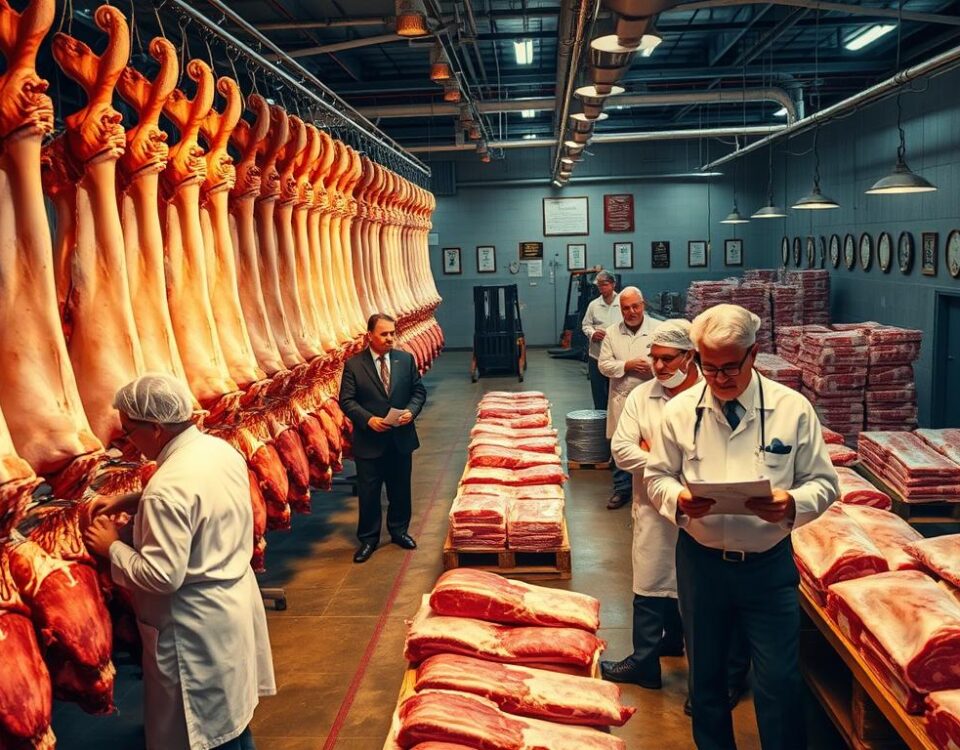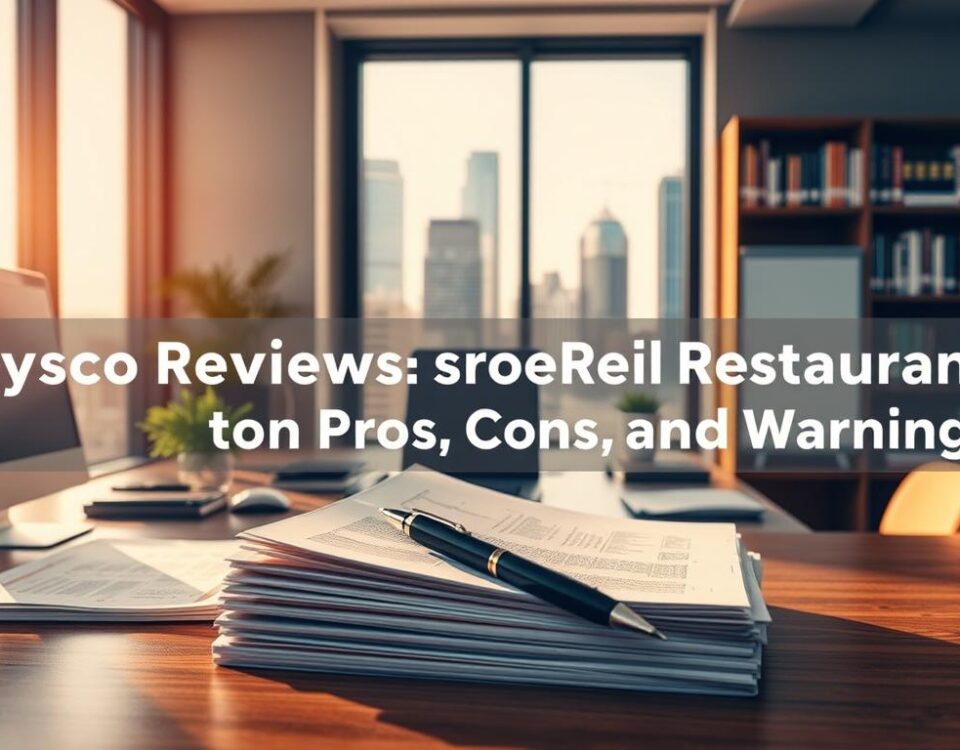
The Ultimate Guide to Hosting a Restaurant-Quality Steak Night at Home
March 28, 2025
The Ultimate Guide to Choosing the Best Location for Your Restaurant
March 29, 2025Did you know that approximately 60% of new restaurants fail within the first year of operation? This staggering statistic highlights the challenges of entering the food industry. But don’t let it discourage you. With the right preparation and dedication, you can beat the odds and create a thriving dining spot.
Take inspiration from Saint Paul, a city known for its vibrant culinary scene. One local chef started with a small food truck, serving unique dishes that quickly gained a loyal following. Today, their good food and welcoming atmosphere have made their brick-and-mortar location a city favorite.
Starting a business in the food industry requires careful planning. From choosing the right concept to obtaining licenses and building a strong team, every step matters. This guide will walk you through the process, helping you turn your dream into reality.
Key Takeaways
- Thorough preparation is essential for success.
- Market research helps identify your target audience.
- Licensing and permits are crucial for compliance.
- Building a skilled team ensures smooth operations.
- Embrace local charm to create a unique dining experience.
Defining Your Restaurant Vision and Concept
Crafting a standout dining experience begins with a clear vision. Your concept is the heart of your business, shaping everything from the menu to the ambiance. A well-defined idea helps you stand out in a competitive market and attracts the right audience.
Start by asking yourself: What makes your dining spot unique? Is it a fusion of global cuisines or a focus on locally sourced ingredients? The answers will guide your decisions and set the tone for your brand.
Crafting a Unique Culinary Experience
Your menu is more than just a list of dishes—it’s a reflection of your vision. Think about how you can create a memorable experience for your guests. For example, a farm-to-table approach can highlight fresh, seasonal ingredients, while a fusion concept can introduce unexpected flavor combinations.
Engage with your community to understand their preferences. Studies show that 85% of successful dining spots sought customer input during their concept development. This feedback ensures your offerings resonate with your target audience.
Incorporating Local Minnesota Flavors
Minnesota’s culinary scene is rich with cultural diversity and local flavors. Drawing inspiration from the Twin Cities can add authenticity to your concept. For instance, incorporating dishes inspired by Saint Paul’s vibrant heritage can create a unique identity for your dining spot.
Local sourcing is another way to connect with your community. Ingredients from nearby farms not only support the local economy but also appeal to sustainability-conscious diners. This approach can increase customer traffic by up to 15%.
By blending innovation with regional tastes, you can create a concept that’s both fresh and deeply rooted in the Minnesota experience. This balance will help you build a loyal customer base and stand out in the Twin Cities dining scene.
Conducting Market Research and Trend Analysis
Understanding your market is the foundation of a successful dining business. It helps you identify opportunities, avoid common pitfalls, and tailor your offerings to meet customer needs. A data-driven approach ensures your dining spot stands out in a competitive industry.
Understanding Local Competition and Demand
Start by analyzing your local competition. Who are the key players in your area? What do they offer, and where are the gaps? This information helps you carve out a unique niche. For example, if most dining spots in your area focus on fast food, you might consider a farm-to-table concept.
Understanding demand is equally important. Use tools like Google Maps to study foot traffic and popular areas. This data can reveal peak dining hours and help you plan your operations accordingly. For instance, if lunchtime is busiest, you might focus on quick, high-quality meals.
Utilizing Google Maps for Location Insights
Google Maps is a powerful tool for location analysis. It provides insights into traffic patterns, nearby businesses, and customer behavior. For example, you can use it to identify areas with high foot traffic but limited dining options.
Another practical method is to open Google and search for local dining spots. This helps you gather competitive intelligence, such as menu offerings and customer reviews. By leveraging these tools, you can make informed decisions about your location and concept.
Analyzing time trends is also crucial. For example, late-night dining might be a growing demand in your area. By staying ahead of these trends, you can create a dining experience that resonates with your audience.
We encourage a data-driven approach to ensure your dining business is well-informed and ready to thrive. By combining market research with digital tools, you can build a strong foundation for success.
Essential Steps to Open Restaurant for Beginners
Starting a dining business involves more than just great food. It requires careful planning, attention to detail, and a clear understanding of legal and operational requirements. Let’s break down the essential steps to help you get started on the right foot.
Acquiring Permits and Licenses
Before you serve your first dish, you’ll need to secure the necessary permits and licenses. This step ensures your business complies with local, state, and federal regulations. Start by researching the specific requirements for your place.
Common permits include health department approvals, liquor licenses, and fire safety certifications. For example, obtaining a liquor license can take 30 to 90 days, depending on your location. Stay organized by creating a checklist to track your progress.
| Permit/License | Purpose | Average Processing Time |
|---|---|---|
| Health Department Permit | Ensures food safety standards | 2-4 weeks |
| Liquor License | Allows alcohol sales | 30-90 days |
| Fire Safety Certification | Ensures compliance with fire codes | 1-2 weeks |
Building an Effective Team
Your team is the backbone of your business. From chefs to servers, every role plays a part in delivering a memorable dining experience. Start by hiring skilled professionals who align with your vision.
For example, a talented chef can elevate your breakfast menu, while friendly servers ensure guests feel welcome. Training is also crucial. A well-trained team can handle busy hours and maintain high standards for every dish.
Remember, a dedicated team can help you eat into challenges with confidence. Invest in their growth, and they’ll contribute to your success.
Designing a Menu That Stands Out
Your menu is the heart of your dining experience, shaping how customers perceive your brand. A well-crafted menu not only reflects your concept but also caters to modern trends. It’s your chance to showcase creativity and leave a lasting impression.

Signature Dishes: Burgers, Tacos, and More
Signature dishes are the stars of your menu. Think about what makes your burger or taco unique. For example, a smoked brisket burger with house-made pickles can become a customer favorite. Similarly, a fusion taco with unexpected flavors can set you apart.
We recommend balancing classic comfort foods like pizza with innovative twists. Studies show that customers appreciate a mix of familiar and new. This approach keeps them coming back for more.
Catering to Late-Night Dining Preferences
Late-night dining is a growing trend, especially in urban areas. Offering a curated selection of food for late hours can attract a new audience. Think hearty options like loaded fries or mini pizza slices that are easy to share.
Design your menu to highlight these items. Place them in the “golden triangle”—the center, top-right, and top-left areas where customers look first. This strategy can boost sales and enhance the dining experience.
By focusing on quality and creativity, you can create a menu that stands out and keeps customers satisfied.
Choosing the Perfect Location and Accessibility
Finding the right location can make or break your dining business. A strategic spot ensures high visibility, easy access, and a steady flow of customers. Whether you’re eyeing a bustling area in Minneapolis or a charming corner in St. Paul, the location sets the stage for your success.
Neighborhoods like Minneapolis offer a dynamic mix of casual diner settings and upscale bar experiences. Scouting st. and street-level areas helps you gauge foot traffic and local trends. For example, a spot near a popular gym might attract health-conscious diners, while a location near a theater could draw late-night crowds.
Navigating Neighborhoods and Local Trends
Understanding the vibe of your chosen area is crucial. In Minneapolis, areas like Uptown and North Loop are known for their vibrant dining scenes. These neighborhoods blend historic charm with modern appeal, making them ideal for a variety of concepts.
Local trends also play a big role. For instance, if your area has a growing demand for craft cocktails, a bar with a creative drink menu could thrive. Similarly, a cozy diner offering comfort food might resonate in family-friendly neighborhoods.
We recommend visiting potential locations at different times to assess foot traffic and activity levels. This hands-on approach helps you choose a spot that aligns with your vision and customer expectations.
Implementing a Friendly and Effective Marketing Strategy
A strong marketing strategy is essential for connecting with your audience and driving business growth. In today’s digital age, leveraging online platforms can make a significant difference in how your brand is perceived. Let’s explore how to create a plan that resonates with your customers and strengthens your presence.
Leveraging Digital Platforms and Social Media
Social media is a powerful tool for reaching your audience quickly. Platforms like Instagram and Facebook allow you to showcase your dining experience visually. Posting high-quality photos of your dishes, behind-the-scenes content, and customer testimonials can build trust and excitement.
Engaging with your followers is equally important. Responding to comments and messages shows that you value their feedback. Studies show that businesses with active social media profiles see higher customer retention rates.
Online delivery platforms are another key component. Partnering with services like DoorDash or Uber Eats can expand your reach. Offering exclusive deals on these platforms can attract new customers and encourage repeat orders.
Your website is the hub of your online presence. Ensure it’s user-friendly, mobile-optimized, and provides up-to-date information. Features like online reservations and menu browsing enhance the customer experience.
Innovative Campaigns for Extended Hours
Targeting late-night diners can set you apart. Create campaigns that highlight your extended hours and special offers. For example, promoting a “Midnight Munchies” menu can attract night owls looking for a quick bite.
- Use social media ads to promote late-night deals.
- Offer discounts for orders placed during specific hours.
- Collaborate with local influencers to spread the word.
By combining creativity with strategic planning, you can build a marketing strategy that drives traffic and keeps customers coming back.
Embracing Trends: Late-Night Dining, Delivery, and Unique Experiences
The late-night dining scene is evolving rapidly, offering new opportunities for businesses to thrive. From extended hours to creative menus, adapting to these trends can set your establishment apart. Let’s explore how to make the most of this growing market.
Adapting to 24-Hour Service Models
Offering 24-hour service can boost revenue during traditionally slow periods. For example, Wendy’s has seen higher average checks during late-night hours. This model appeals to night owls and shift workers, creating a steady stream of customers.
Adjusting your kitchen operations is key. Simplify menus for late-night shifts to focus on quick, high-quality items like wing platters or mini pizzas. This ensures efficiency while maintaining customer satisfaction.
Partnering with Delivery Services
Delivery is a game-changer for late-night dining. Platforms like Delivisor make it easy to reach customers who prefer ordering from home. In 2023, 10% of late-night QSR transactions were for delivery, highlighting its growing importance.
Create exclusive late-night deals to attract delivery orders. For instance, offering a Midnight Munchies combo can entice customers looking for a quick bite. This strategy not only increases sales but also builds brand loyalty.
- Extend hours to cater to night owls and shift workers.
- Simplify menus for efficient late-night kitchen operations.
- Partner with delivery platforms to expand your reach.
- Offer exclusive deals to attract late-night orders.
- Stay flexible to adapt to evolving customer preferences.
By embracing these trends, you can tap into a lucrative market and create a unique dining experience. Whether it’s serving until midnight or partnering with delivery services, innovation is the key to success.
Conclusion
Building a thriving dining spot requires a mix of strategy, creativity, and adaptability. Throughout this guide, we’ve explored essential steps like conducting thorough research, designing a standout menu, and choosing the perfect location. These elements are the foundation of a successful business, whether you’re serving breakfast or catering to late-night dining crowds.
We’ve also highlighted the importance of marketing and embracing trends. Offering unique experiences, like extended hours or exclusive options, can set you apart in a competitive market. By staying flexible and innovative, you can create a dining spot that resonates with your community.
Remember, success doesn’t happen overnight. It takes dedication, planning, and a willingness to adapt. Whether you’re serving meals during the day or into the night, your vision can become a reality with the right approach. Start small, think big, and enjoy the journey!
FAQ
How do we start defining our restaurant vision and concept?
Begin by crafting a unique culinary experience that reflects your passion. Incorporate local Minnesota flavors to create a connection with the community.
What’s the best way to conduct market research for our restaurant?
Analyze local competition and demand in your area. Use tools like Google Maps to gain insights into the best locations and customer traffic patterns.
What are the essential steps to open a restaurant for beginners?
Start by acquiring the necessary permits and licenses. Then, focus on building an effective team that shares your vision and values.
How can we design a menu that stands out?
Highlight signature dishes like burgers, tacos, and breakfast favorites. Consider catering to late-night dining preferences to attract a wider audience.
What should we consider when choosing a location?
Explore neighborhoods in the Twin Cities, such as Minneapolis and St. Paul, to find a spot with high accessibility and local trends that align with your concept.
How can we effectively market our restaurant?
Leverage digital platforms like social media and your website to showcase your menu, hours, and unique offerings. Engage with your audience to build a loyal customer base.
How do we adapt to trends like late-night dining and delivery?
Consider offering extended hours or 24-hour service models. Partner with delivery services to make your food accessible to customers at any time.



